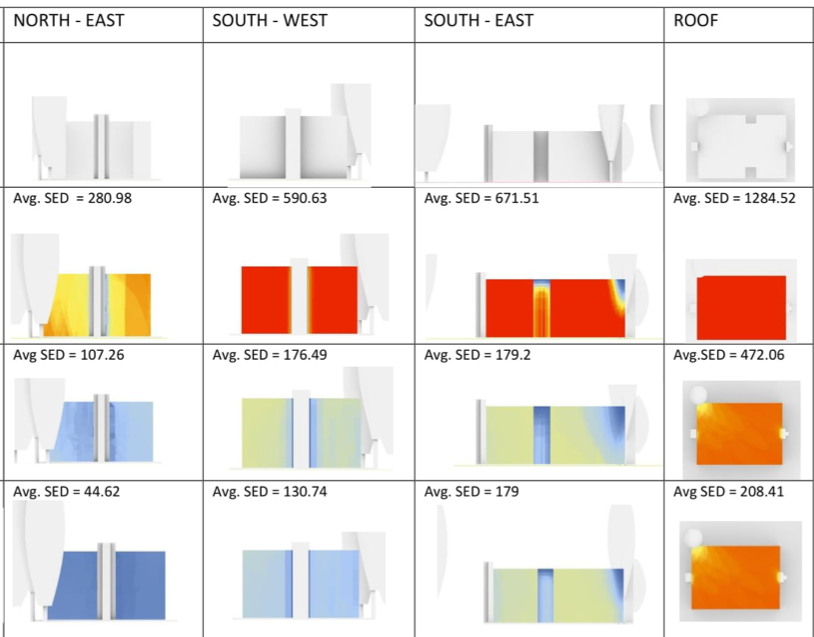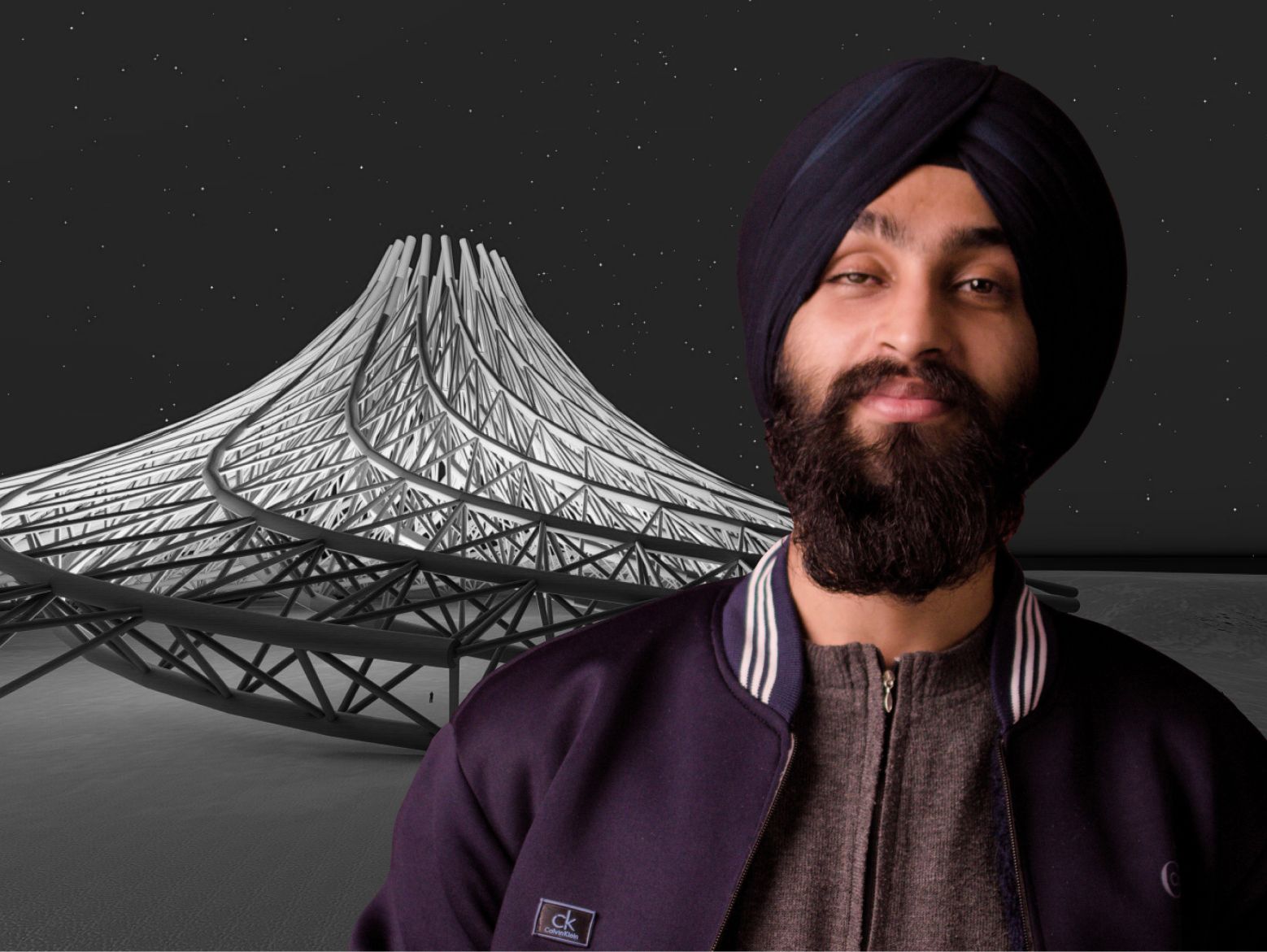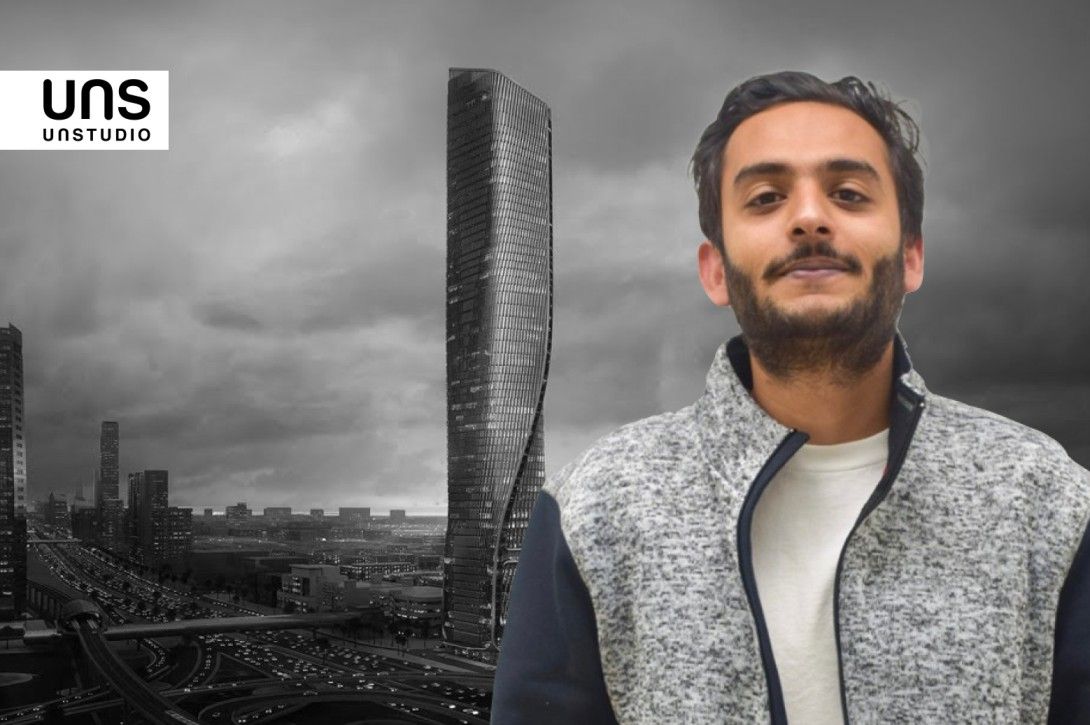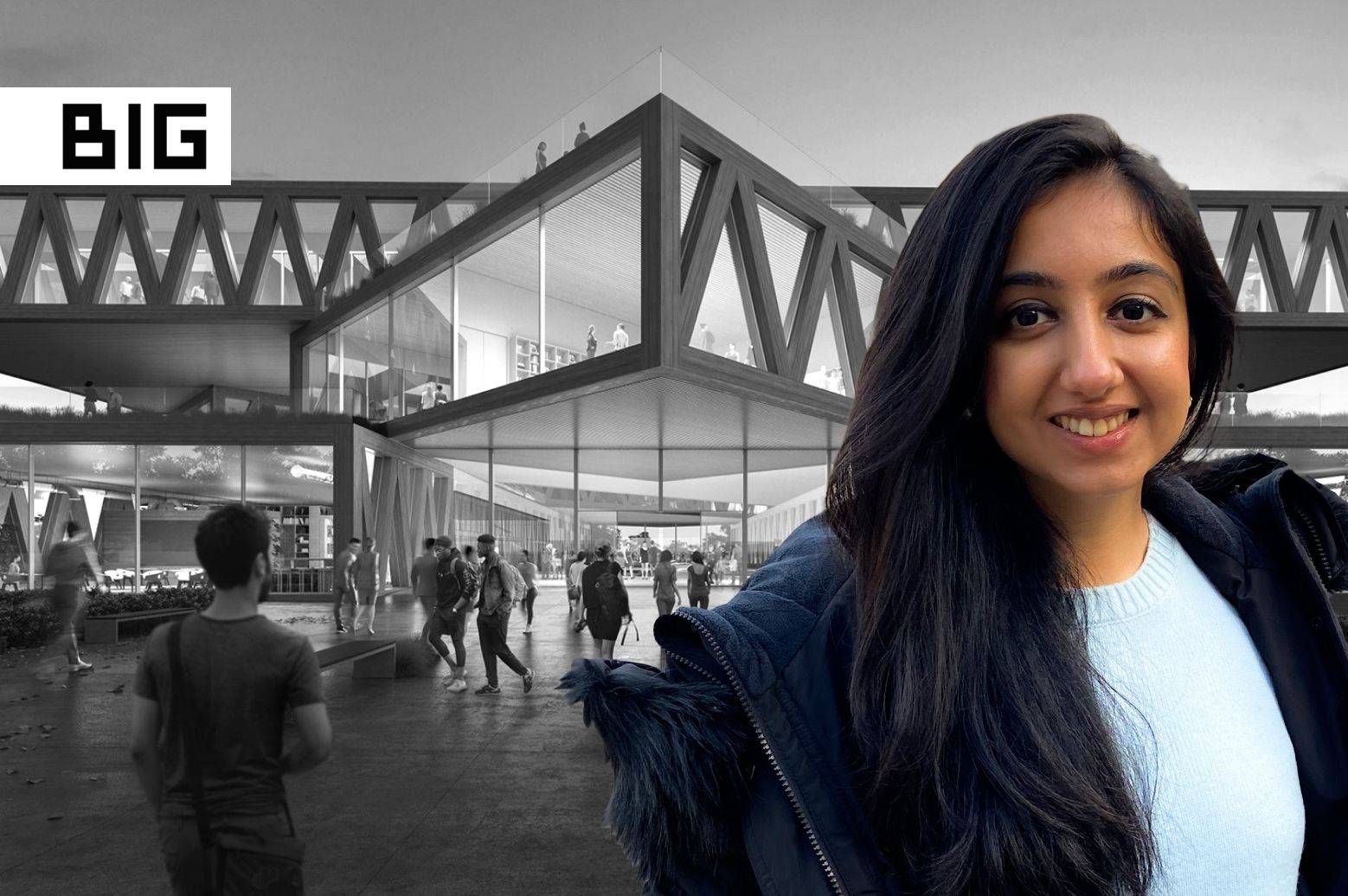PROGRAMS
Join thousands of people who organise
work and life with Novatr.
Building a Career in Sustainable Architecture: Advice from a Sustainability Expert
Saumya Verma
15 mins read
September 27

I realised that architecture is not just about aesthetics and functions. Architects have a bigger responsibility towards the environment and the future generations to come. That's why sustainability is important.
Q1. You have experience as an architect, you’re a certified LEED professional and you have even had your research published. Can you give us a rundown of your professional experience up until now?
I started off with my Bachelor's in Architecture in Hyderabad, India. Before choosing architecture, I wanted something that is somewhere in between science and arts, and I thought architecture would be a good way to integrate both. That's why I chose to do architecture.
At the time when I graduated from my Bachelor's, Novatr wasn't around and I didn't know what to do, so I was in between different jobs. I did visual designing for a bit and then I came back to the field of architecture and worked with various architects in India.
During my course in architecture, I always wanted to do sustainability, but I didn't know how to pursue it. So, I did a lot of courses online on Coursera. I did “Introduction to Sustainability” and I also wrote the IGBC AP exam.
Then, I was working as a designer in a 3D visualisation company called Foyr in Hyderabad. And even though I really loved my job, I thought that I should pursue my Masters in Sustainability since it was what I always wanted to do. That's why I applied to various colleges all over the world and I chose Carnegie Mellon University.
Once I graduated from CMU, I started working as a sustainability project manager in New York City at The Levy Partnership.

Afshan’s research on Jali’s solid to void ratio (Source: https://afshanrehman.com)
Q2. What attracted you to the field of sustainable architecture?
There are two things that attracted me to sustainable architecture.
Firstly, while I was doing my Bachelor’s in architecture, I realised that architecture is not just about aesthetics and functions. I realised that architects have a bigger responsibility towards the environment and the future generations to come. That's why sustainability is important. I realised my responsibility as an architect and decided that I wanted to pursue sustainability, and that's where I saw myself in the structure of society.
Another reason was the fact that I grew up in Hyderabad, and there is so much vernacular architecture in Hyderabad. Even the rest of India has so much vernacular architecture, and all these buildings are very sustainable in terms of their methods of construction. I wanted to do research on how you can incorporate these vernacular methods and use them to pioneer modern technology instead of looking for completely new solutions.
Q3. You’ve worked on projects that require analysing a lot of data in your career. How has Building Information Modelling (BIM) helped you with these challenges?
When it comes to sustainability, a lot of people just see one side of the picture - which is consuming less energy. But sustainable architecture also means consuming less, holistically. This includes - reducing, reusing, and recycling.
How BIM helps with this is that it allows you to use data to reduce the amount of construction waste. If you're able to fabricate your construction modules, you can avoid over-ordering materials, and by reducing this waste you're being more sustainable.
It's not just about not wasting material. If you use the data in BIM and fabricate your construction, you're also making better quality products. And when the lifespan of your building is longer, you are building more sustainability.

Solar Radiation study of Margaret Esherick house (Source: https://afshanrehman.com)

Q4. What are some of the software that you use on a daily basis?
The software that you use varies on what you want the output to be. So, if you are going for a rating system like LEED or Passive house, then you would use a specific type of software. But if you want to do daylight analysis, carbon and energy analysis, then your software would be different. So while I was in Carnegie Mellon University, I was mostly working with ClimateStudio, cove.tool, and Ladybug.
When I started working professionally, I had to work with completely new software. It might seem difficult and overwhelming, but as long as you understand what the basic modelling inputs are for energy modelling, you should be able to use any software which is available.
In my current, professional, day-to-day life I use Ekotrope, eQUEST and WUFI mostly.
What I have realised as an energy modeller is that your 3D modelling software choice will not determine your energy modelling software. The other things matter much more. As an energy modeller, you should be able to use a gbXML file and use any energy modelling software.
Q5. What are some of the biggest challenges of being a professional in the sustainability sector?
So this is something that's always been on my mind even before I started working professionally. For example, if you see the amount of energy the US consumes versus India, America consumes ten times more electricity than India - even though the population of India is around 1 billion, and the population of the US is around 300 million. It doesn't mean that India is more sustainable. It just means that in India, people don't have access to dishwashers, washing machines, and air conditioners.
So my biggest challenge has been that I feel it's very unfair to tell people to not use technology. I feel everybody should have access to technology, everybody should have access to comfort. As a society, we should be able to give more affordable options of things; technology that is more efficient. I think everybody should have access to building construction or equipment that is more efficient. I think the biggest challenge in sustainability would be affordability, for this reason.
Q6. In recent years there's been a lot of discussion about sustainable development. What are some misconceptions you’d like to clear about your field?
It's slightly related to what I just mentioned. The misconception is that green or sustainability is only something that the rich can afford. So, even though the first cost might be high, if you look at the payback and the lifespan of the building, you're eventually going to make that money back if you invest in something that is sustainable.
And in a few years, you're going to start getting a bank for your buck, because you're spending less on electricity or gas. So, even though it seems like it's expensive, in the long run it's not going to be expensive.

Daylight simulation in ClimateStudio using web-based VR technology (Source:https://afshanrehman.com)
Q7. How do you think BIM can help in the efforts against global warming?
Okay, so one point I already mentioned is about the basics – how you can use BIM to reduce the amount of construction waste.
And the other way BIM can be used, and is being used, is for reporting carbon data. So whether it's embodied carbon or operational carbon, using BIM produces a lot of transparency. So from the beginning, or the conceptual design stage to the design development stage, there's always transparency about what materials you're using, what's the embodied carbon of each material, and where you're sourcing your materials from. Because BIM stores this information about what materials you're using, I think having the carbon data can really help in combating global warming.
Another way BIM is used is for retrofitting and renovating buildings. Breaking down a building and constructing a new building is never a solution. You should try to retrofit what you already have. And by using the data that you have, you can just see which part of your building is not very efficient. For example, you can see if you should replace your windows or add more insulation or just replace your HVAC system. You can use BIM to make these retrofitting decisions.
A lot of people just assume that most of the carbon emissions are coming from industry and factories. But actually 40% of the carbon emissions come from the built environment. So, architects have a huge role to play.
I think, fortunately, we are at a stage where we don't have to explain the importance of sustainability to people. I think everybody now knows that climate change is real and global warming exists. It's just that they don't know what to do about it.

The artificial intelligence invasion : A comical take on AI and life. The comic gives a sneak peek into the life of lazy Allen Tucker, a tech-utopia dweller(Source:https://afshanrehman.com)
Q8. You’ve been part of multiple projects, which one of them would be your favourite?
I'm going to mention two projects, and it's going to call back to what we spoke about just now.
One project is something that I worked on with one of my peers at Carnegie Mellon University. She's also from the School of Planning and Architecture. We both wanted to study Indian vernacular architecture. So, we chose this method of construction used in India called the jali. It has different names in other cultures, like it's called mashrabiyain the Middle East. We wanted to research that and work on the solid to void ratio and the perforation size, and alter that and see how one can increase the amount of daylight in a room and also give more thermal comfort by using venturi effect. So, I think that is one project that we both were very excited to work on.
Another project, which was more of a fun project than a research project, was a comic. I had imagined a future where technology is taking over the world and the main protagonist is very lazy, very dull, but he's still able to live a very sustainable life because technology is helping him live a very sustainable life. I had given a few drawings and examples of how that happens. So that's also one of my favourite projects.

Q9. Do you have any advice for young professionals who might want to specialise in sustainability?
Most of the people in India are engineers or doctors. Architecture itself is a very niche profession, and sustainable architecture is even more niche. But when it comes to sustainability, there are many fields that people can pursue. It's not just energy modelling. My peers and I got our master’s in sustainable design at Carnegie Mellon. All of us are now working in different fields, but in sustainability in the AEC industry.
So people who want to pursue sustainability in the AEC industry, I think, should be aware of what all they can do so that they can choose a college or a course which caters to what they want to research about. The examples of this in the AEC industry would be energy modelling, ESG consulting (which is environment and social governance), data analysis, software development (developing all these software for energy modelling), etc.
So, there are many things that you can do in sustainability. My advice would be to know why exactly you want to do sustainability and where you see yourself contributing and choose a course accordingly.
Q10. As a mentor, you’ve also actively been involved with Novatr’s BIM Professional Course. Why would you advise professionals to take up this course? And how have you found working with Novatr's students so far?
So when I did architecture, everybody in my family was a doctor, so I didn't have anybody to go to for career advice, to ask whether I should be working or if I should pursue my masters immediately. I think Novatr is not just teaching you BIM and making you industry ready, the best thing about Novatr is that it also provides industry guidance. You can talk to people and mentors from the industry who are doing different things in different countries and you always have them available for advice.
Everybody is very approachable and that's one great thing about Novatr and it's also helping you with learning BIM and Grasshopper and it's really going to help you when you start working professionally.
I think the best thing about the students from Novatr is that whoever has taken this course has taken it because they wanted to, because they want to improve themselves, they want to be better. I've always found that the students really want to learn and it's nice to have that experience as a mentor when students are really interested in learning.
Sustainability is an elective in the BIM course and it's nice because sustainability is a big part of the AEC industry and everybody should have some knowledge about it. It's nice that Novatr prepares all these students very holistically for the real world and for the industry.
Looking to learn sustainable architecture with the right technical skills? Take the first step by enrolling in Novatr’s BIM Professional Course. Head to our Resources page to discover more articles and career insights on sustainability and BIM.
Join 100,000 designers who read us every month


